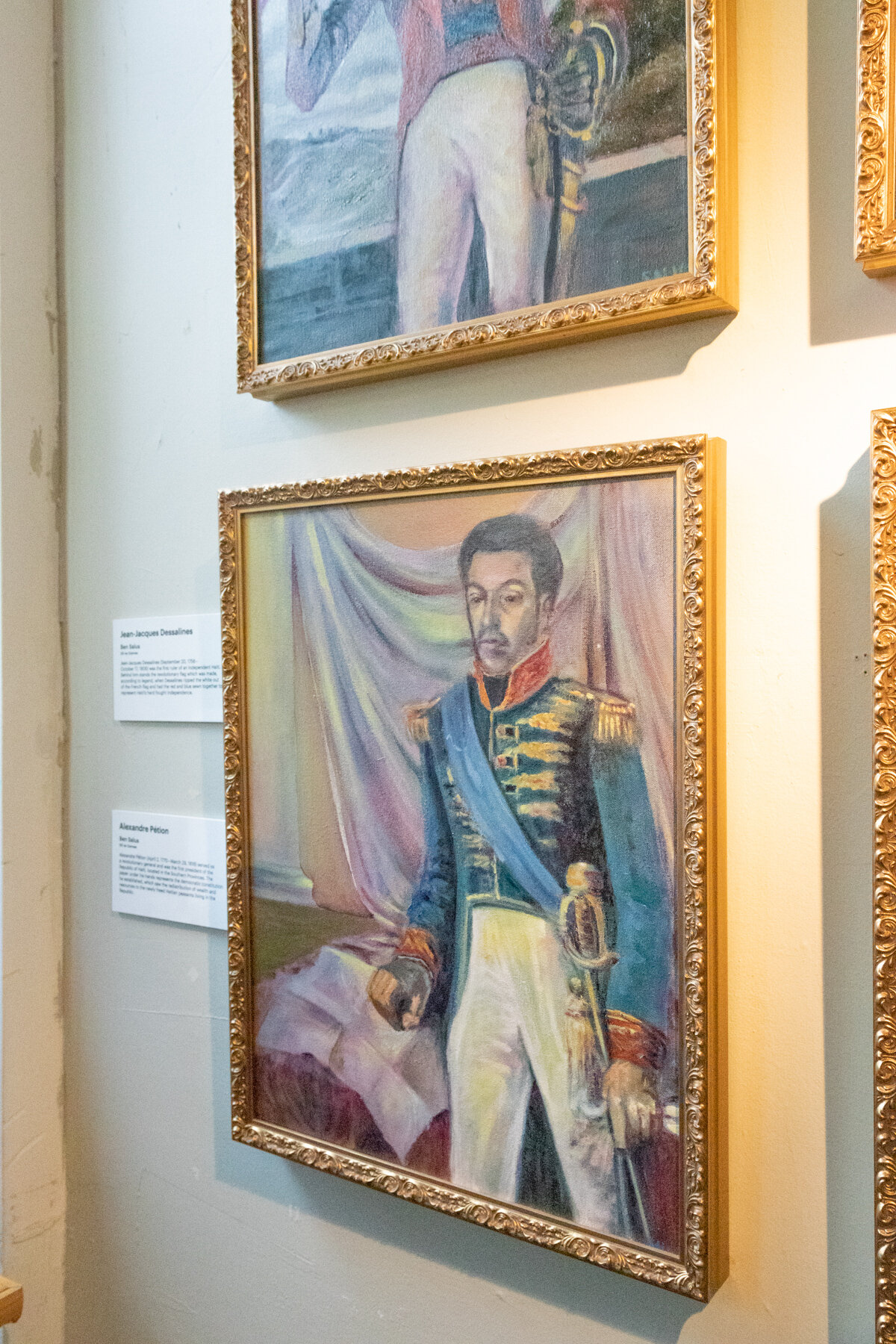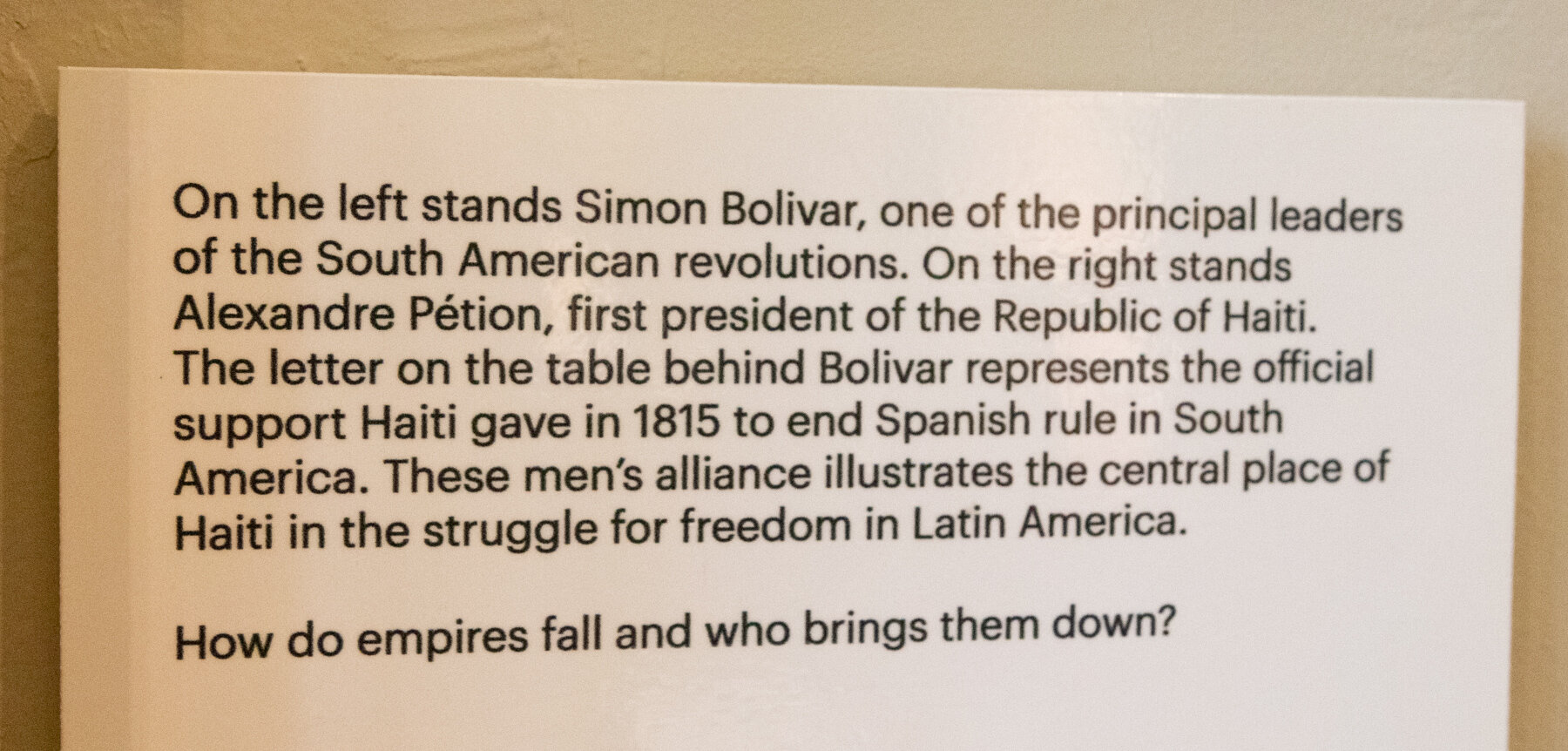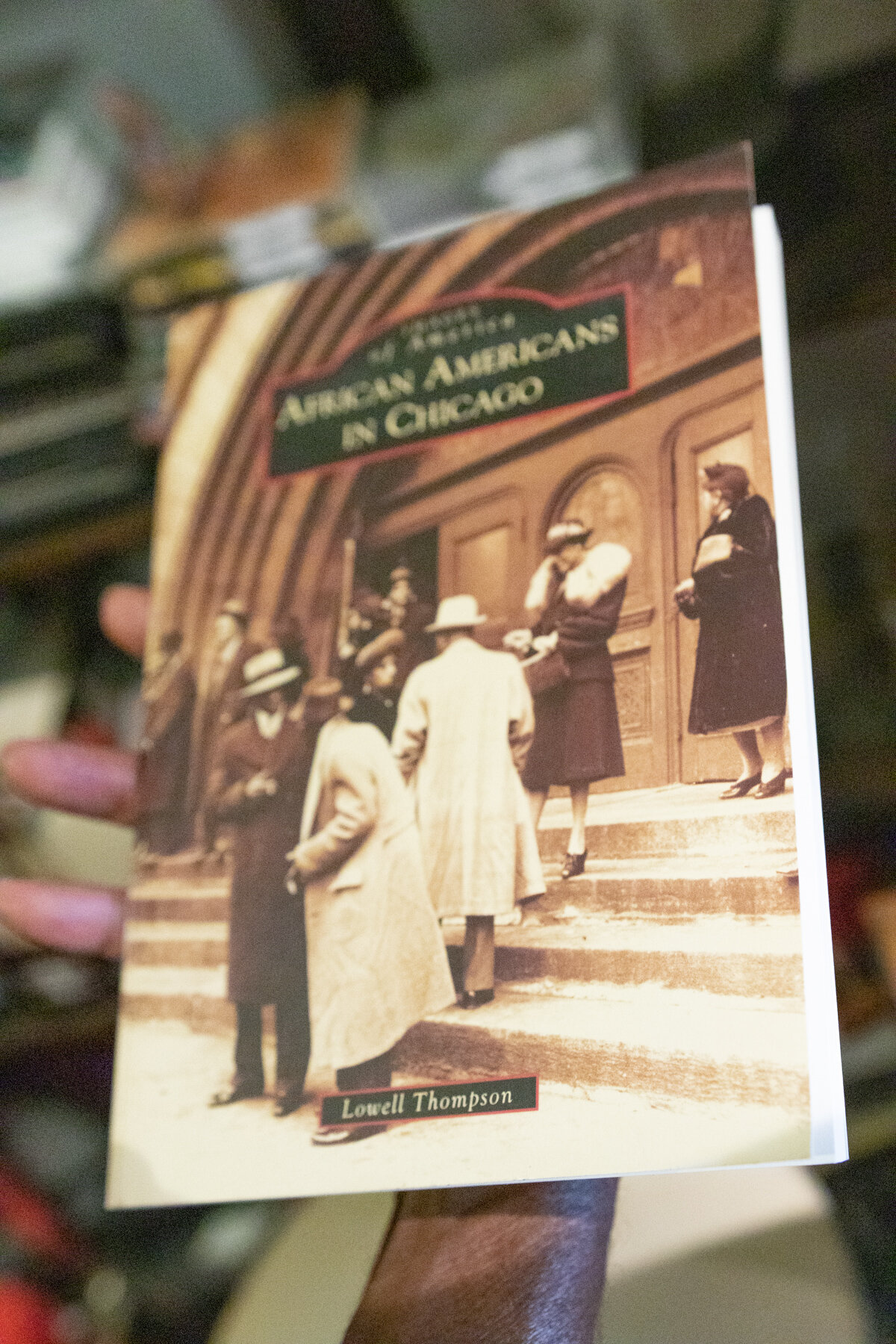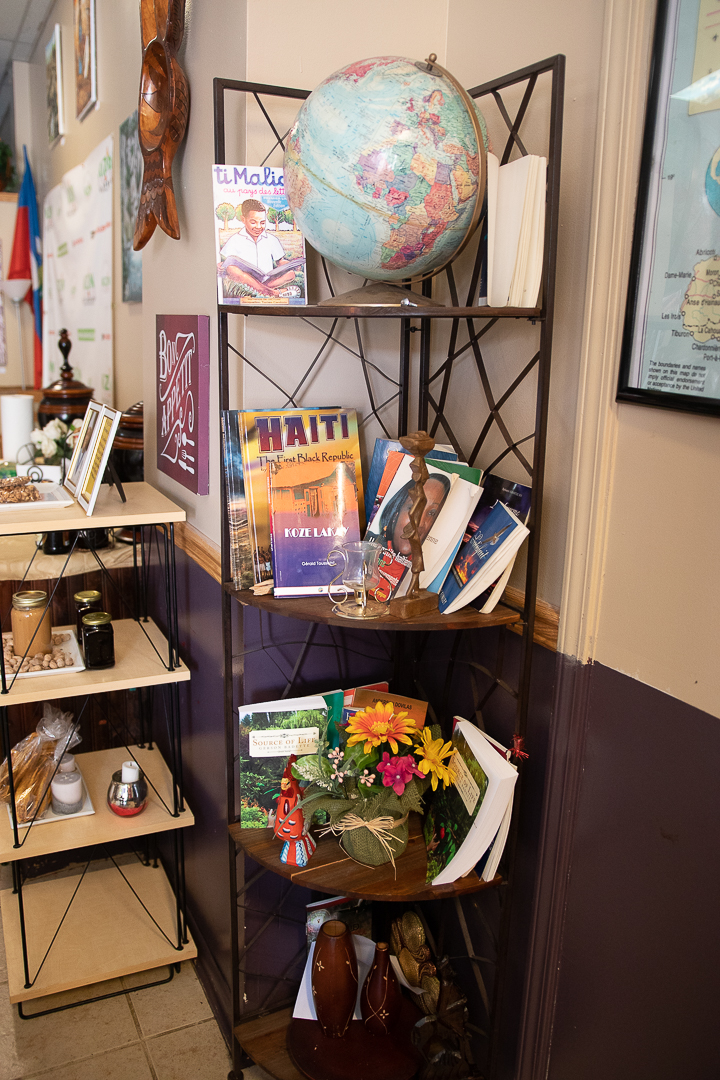NOTE: In honor of Haitian Flag Day and Haitian Heritage Month, here is a (very overdue) continuation of my trip to Chicago’s Little Haiti’s cultural sites, the Haitian American Museum of Chicago (HAMOC). Due to COVID-19 public health measures, the state of Illinois is still under a shut-down, and non-essential businesses must remain closed until further notice. If you wish to support the HAMOC and its mission to bring forth the rich culture and history of Haiti to Chicago (again... A city founded by a Haitian settler - don’t you forget it), please visit their website here.
After having lunch at Kizin Creole, I made my way down to the Uptown neighborhood of Chicago to visit the Haitian American Museum of Chicago (HAMOC). Being a Brooklyn native and with a newly announced designation of Little Haiti in the East Flatbush area, I have never seen a cultural center dedicated to Haitian culture. Hence, HAMOC was a must-see on my trip.
The Founder, Elsie Hector Hernandez:
The Haitian American Museum of Chicago was founded by Elsie Hector Hernandez in 2012. A native of Haiti, she came to the States at a young age and settled in New York City. She did much of her schooling in the city, later working as a nurse, and was involved in the local community with her husband. After traveling to Chicago, the couple decided to make the big move from the Big Apple to the Windy City and have remained there since. When I inquired about how the museum came to fruition, she shared that although Chicago was founded by a Haitian settler, Jean Baptiste Point du Sable, the city doesn’t offer much dedicated to DuSable’s heritage and the sizable Haitian community that thrives in the city. She also commented that this museum space and Kizin Creole are really the only two entities (at the time of my visit in September 2019) that are focused on Haitian culture and identity. After a trip to Haiti to support the medical relief efforts after the 2010 earthquake, Elsie became inspired to create a museum to focus on the beauty, history, and strength of the Haitian people. She currently lives in Chicago’s South Side, which is home to the largest concentration of Haitian Chicagoans in the city.
Stepping in front of the museum, you are met with a large Haitian flag flown at the mast (but, of course) and large windows to allow a sneak peek of the paintings. Walking inside, I was greeted by the museum’s manager, Vishnu Menon. Vishnu, who is by way of India, has formal education in business and arts management. During my visit, I asked more about him and how did he come to learn about the museum. He shared that he heard about the opportunity through his professional network. He supported the museum’s mission of community engagement and wanted to be a part of the journey.
The museum does have an admission fee of five dollars, but patrons of Haitian descent only pay four dollars, and it is based on an honor system. I knew the small Haitian flag I carry with me would come in handy, and I proudly rummaged through my purse and waved it. It actually wasn’t needed for me to show it, but what was the point of carrying the flag around if I won’t have an opportunity to be extra with it? Once I paid the admission fee, I was granted access to see the full space.














Across the walls are paintings of historical figures in Haiti’s revolutionary history. Each painting featured a small placard that listed the name of the piece, creator, and year of completion. An additional placard near the paintings shares a bit of history, so patrons can be able to directly interact with the artwork.
Jean Yves Hector, Artist in Residence:
Another section of the space is reserved for artists’ in residency and commissioned works. One of the full-time artists in residence whose paintings were showcased in the gallery is Jean Yves Hector. I had the opportunity to meet with Jean-Yves and learn more about his work. Jean-Yves is a native of Haiti’s capital city, Port-au-Prince, and travels between Chicago and Haiti. Along with being an artist and artist-in-residence at the museum, he is also an Advisory Board Member (and also the nephew of the museum’s founder, Elsie). As an entirely self-taught artist, Jean-Yves’ work is inspired by the traditional spirituality of Haiti, and while not a religious man himself, he finds deep appreciation for the traditional spirituality and incorporates them into his work.


Lowell Thompson, Uptown’s “Colored Man”:
Lowell “Raceman” Thompson. Credit: Unknown.
While at the museum, I had the opportunity to meet with another established Chicago artist, Lowell Thompson, a long time Uptown neighborhood resident. Uptown was an area of Chicago known as the heart of the arts and entertainment district in the 1900s. Over the century and after World War II, when many families flocked to the suburbs, the neighborhood started to see an influx of residents from the South and Appalachian areas (many of them white), with Blacks, Hispanics, and Asians moving into the area. The neighborhood, later on, became a hub for drug addicts, felons, and the mentally ill. The artist pointed out to me that after the push of gentrification in the area, there is only one housing facility left for these groups. The artist also pointed out that the Uptown area is one of the truly most diverse neighborhoods in the city, and people actually get along well here. As a New Yorker, this came as a shock to me, because gentrification has been a harsh topic of debate and created much tension amongst many groups. I can say that I also felt the comfort of the diversity and community while walking around a bit in the Uptown area.
Lowell was chosen to create an art installation that represents the Uptown neighborhood. After five years, his work “Uptown’s Colored Wheel” was unveiled on May 10th, 2019. The 10-ton icon, according to him, is a “tribute to the least segregated place in the most segregated big city in America.” His work is a part of a goal to eliminate racial divisions “to change the human race from ‘black or white’ to COLORED™.” Thompson is also the author of African Americans in Chicago (Images of America), which is a photography book that features prominent residents of Chicago from Muhammad Ali, Ida B. Wells, Oprah Winfrey, former President Barack Obama, and more.



What’s next for HAMOC?
As the museum continues to grow, Elsie aspires to have the museum be more visible in the tourism of Chicago’s famed cultural and historical art scene. As more visitors travel to the city, she continues to find ways that she can showcase the museum and the Haitian culture. Another goal for Elsie is to find a way for more Haitian Chicagoans to find a stronger sense of community. She noted that unlike other stronghold Haitian enclaves in other U.S. cities and even abroad, Chicago’s Haitian community is quite dispersed throughout the city, making it difficult to pinpoint a central area where many Haitians can congregate and find their community (somewhat akin to the Little Haiti neighborhood of Miami, Florida). The museum proudly celebrated its 7th anniversary in December 2019, and I wish them many more years of welcoming visitors and bringing Haitian history and culture to the great city of Chicago.
If you would like to learn more about the museum, please check out their website and social media here: Facebook and Instagram. If you are looking to explore “less touristy” areas of Chicago and enjoy visiting local hotspots, I highly recommend making a visit to the Haitian American Museum of Chicago. I mean… their Google reviews don’t lie. Don’t believe me? See for yourself.
Peace and Blessings,
































